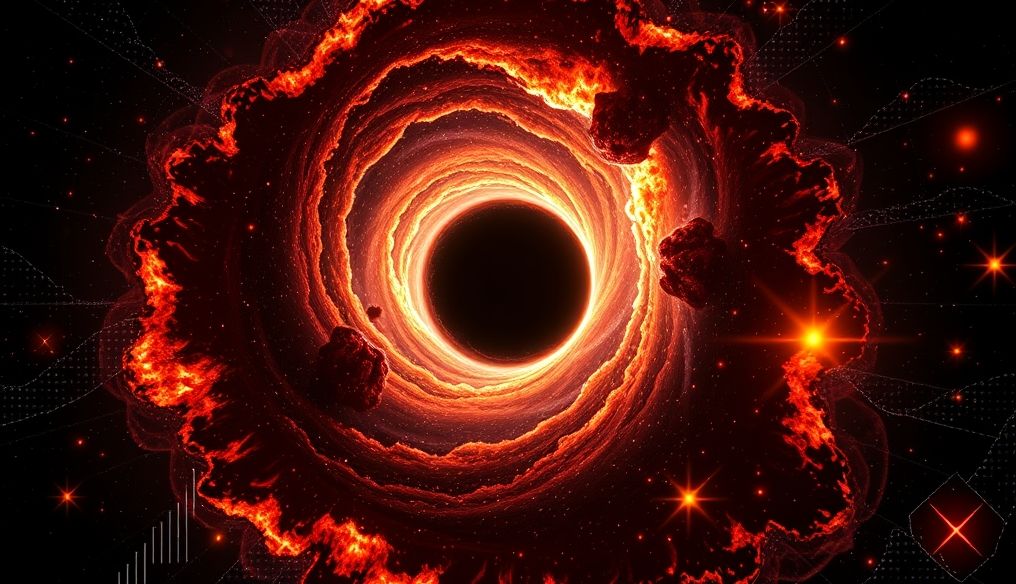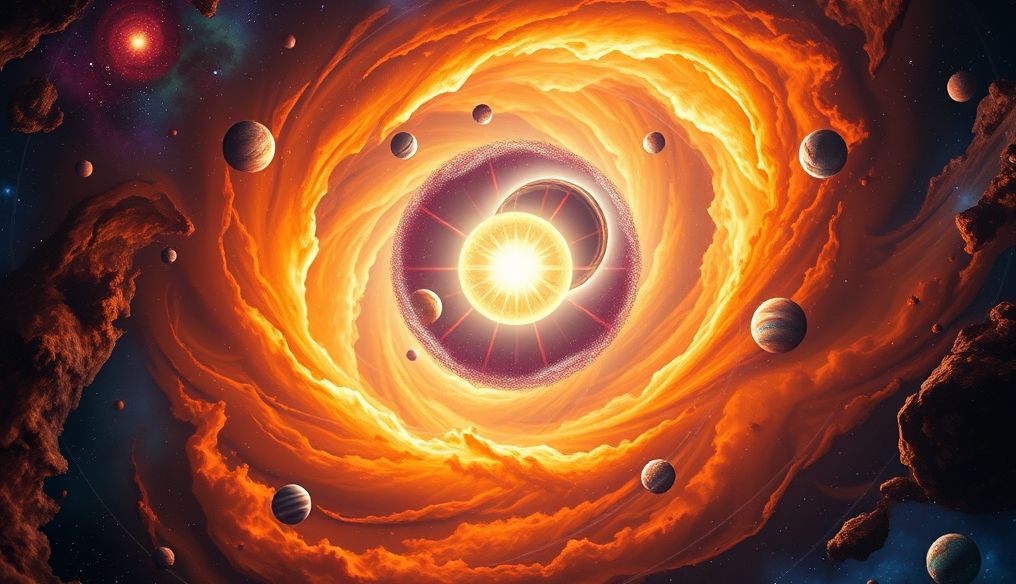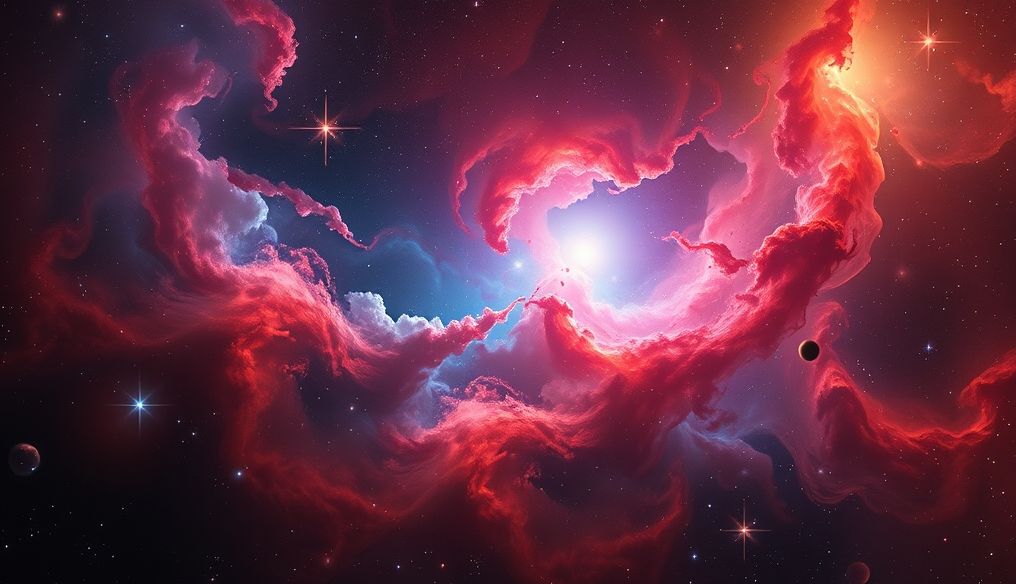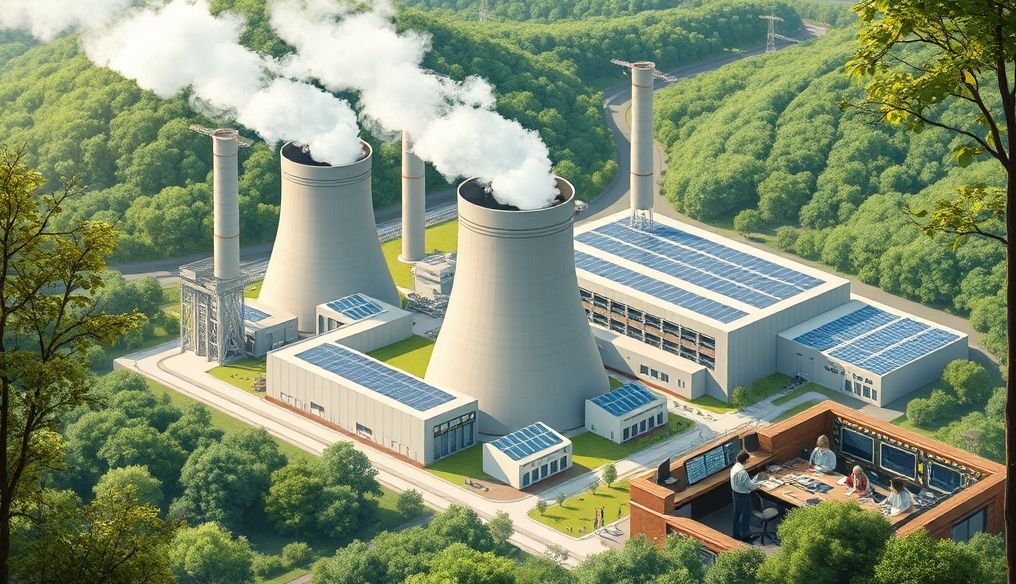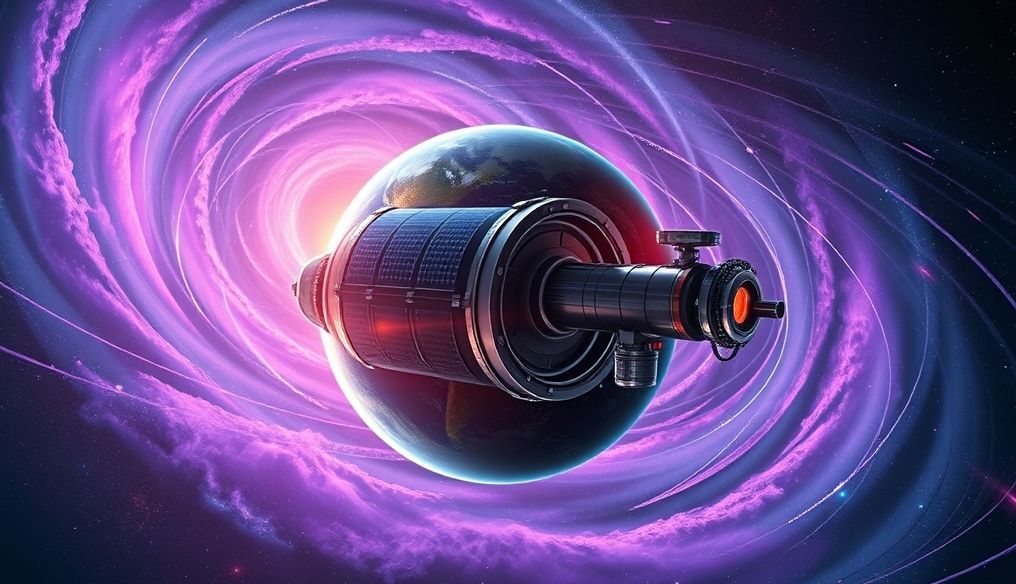Introduction to Black Holes: The Universe's Hidden Monsters
Black holes are regions in spacetime characterized by immense gravitational force from which nothing, not even light, can escape. This bizarre phenomenon, predicted by Albert Einstein's theory of general relativity, has captivated scientists and the public alike. So, what are these mysterious celestial bodies? How do they form? And what might we find inside them? This is what we will explore in this article.
How Do Black Holes Form? The Birth of a Cosmic Beast
Black holes typically form through the gravitational collapse of massive stars at the end of their life cycle. There are several scenarios for the formation of black holes, but the most common scenario is:
1. Death of Massive Stars: Supernovae and Gravitational Collapse
When a massive star (10 to 20 times larger than the Sun) runs out of fuel, nuclear fusion in its core ceases. This fusion is what provides the outward pressure that balances the immense gravitational force trying to crush the star. When fusion stops, gravity begins to win, and the star begins to collapse on itself.
At this stage, a supernova (supernova) explosion can occur, a massive explosion that ejects the outer layers of the star into space. If the remaining core of the star is large enough (more than about 3 solar masses), gravity will continue to crush it to a point where no other force can resist it. This point is called the "Singularity," a point of infinite density and zero volume. Around this singularity, the black hole forms.
2. Primordial Black Holes: Remnants of the Early Universe
Another theory suggests that some black holes, known as primordial black holes, may have formed very early in the history of the universe, shortly after the Big Bang. These black holes are thought to have formed from density fluctuations in the early universe. The existence of these primordial black holes has not been definitively confirmed yet, but they remain an active topic of research.
3. Black Hole Mergers: Monsters Meet
Black holes can also form from the merger of smaller black holes. When black holes approach each other, they begin to orbit each other at an increasingly rapid rate, losing energy in the form of gravitational waves. Eventually, the black holes collide and merge to form a larger black hole.
Parts of a Black Hole: Cosmic Anatomy
A black hole consists of three main parts:
1. Singularity: The Heart of Darkness
As mentioned earlier, the singularity is a point of infinite density and zero volume located at the center of the black hole. At this point, all known laws of physics break down, and we cannot understand what is happening there using current physics. The singularity is what truly represents the essence of the black hole.
2. Event Horizon: The Point of No Return
The event horizon is the boundary surrounding the singularity from which nothing, not even light, can escape. Once the event horizon is crossed, there is no return. The gravitational force is so strong that it pulls everything inward towards the singularity. The event horizon is considered the "surface" of the black hole, although it is not a physical surface in the traditional sense.
3. Accretion Disk: A Feast of Death
The accretion disk is a disk of gas and dust that orbits the black hole before falling into it. The matter in the accretion disk accelerates to enormous speeds and heats up dramatically due to friction. This intense heat causes the accretion disk to shine brightly, and this light is often how we detect black holes.
What's Inside a Black Hole? A Journey into the Unknown
This is the question that raises the most controversy and mystery. According to the theory of general relativity, all the matter that falls into the black hole is crushed into the singularity. However, current physics cannot handle the infinite density of the singularity, so we don't really know what happens there.
1. Singularity: The End of Known Physics
As mentioned, the singularity is a point that we cannot understand using current physics. Some theories predict that the singularity may be a "Wormhole" leading to another universe, or it may be a place where the laws of physics are formed in a completely different way. However, these are just speculations, and there is no conclusive evidence for any of these theories.
2. Spaghettification: Torn to Shreds
If you are close enough to a black hole, the gravitational force will be much stronger on your feet than it is on your head. This difference in gravitational force will cause you to stretch lengthwise, like a piece of spaghetti. This phenomenon is called "Spaghettification," and it is a very painful and unpleasant end.
3. Missing Information? The Information Paradox
Black holes raise an important paradox in physics called the "information paradox." According to quantum mechanics, information cannot be destroyed. However, black holes seem to destroy information, because everything that falls into them is crushed into the singularity and cannot be recovered. Scientists are trying to resolve this paradox through various theories, such as string theory and firewall theory, but there is no agreed-upon solution yet.
Types of Black Holes: Not All Alike
Black holes come in a variety of sizes and shapes:
1. Stellar Black Holes: Medium-Sized Monsters
These are the most common black holes, formed from the collapse of massive stars. Their mass typically ranges from 5 to 100 times the mass of the Sun.
2. Supermassive Black Holes: Rulers of Galaxies
These black holes are located at the centers of most galaxies, including our Milky Way galaxy. Their mass ranges from millions to billions of times the mass of the Sun. The origin of these giant black holes remains a mystery, but it is thought that they may have formed from the merger of many small black holes, or from the collapse of massive clouds of gas and dust.
3. Intermediate-Mass Black Holes: The Missing Link
These black holes are relatively rare, and their mass lies between stellar black holes and supermassive black holes. Scientists believe they may be the missing link in understanding how supermassive black holes form.
Discovering Black Holes: How Do We See What Can't Be Seen?
Since black holes do not emit light, how do we detect them? There are several ways:
1. Gravitational Effect on Surrounding Objects
We can detect black holes through their gravitational effect on surrounding objects, such as stars, gas, and dust. If a star is orbiting something invisible, that thing might be a black hole.
2. X-rays Emitted from the Accretion Disk
As mentioned earlier, the accretion disk around the black hole heats up dramatically and emits X-rays. We can detect these X-rays using space telescopes.
3. Gravitational Waves: Ripples in Spacetime
When black holes merge, they emit gravitational waves, which are ripples in spacetime. We can detect these gravitational waves using devices such as LIGO and Virgo.
The Importance of Black Holes: More Than Just Monsters
Despite their fearsome reputation, black holes play an important role in the universe:
1. Organizing Galaxies: The Hidden Force
Supermassive black holes at the centers of galaxies help regulate the growth and evolution of galaxies. The energy emitted from the accretion disk around the black hole can affect star formation in the galaxy.
2. Astrophysical Laboratories: Testing Relativity
Black holes provide a unique environment for testing theories of physics, such as Einstein's theory of general relativity. We can study the behavior of matter under extreme conditions near black holes.
3. Window to the Early Universe: A Look into the Past
Studying primordial black holes may help us understand more about the early universe and how large structures like galaxies formed.
The Future of Black Hole Research: Where Are We Headed?
Black holes remain an active area of research, and there are many questions that have yet to be answered. Some key areas of future research include:
1. Understanding the Singularity: Transcending Known Physics
Scientists are trying to develop new theories that can describe what happens inside the singularity. These theories may require a revolution in our understanding of physics.
2. Solving the Information Paradox: Preserving the Universe
Scientists are trying to find a solution to the information paradox, which may require rethinking the relationship between quantum mechanics and gravity.
3. Discovering More Black Holes: Mapping the Universe
Scientists are using new telescopes and advanced technologies to discover more black holes throughout the universe, helping us understand their distribution and evolution.
Conclusion: Black Holes - The Universe's Eternal Mystery
Black holes are mysterious and amazing celestial bodies, posing a challenge to our understanding of physics and the universe. Although we have learned a lot about black holes in recent decades, there is still much that remains unknown. As we continue to explore these cosmic monsters, we may discover new secrets about the universe and our place in it.
